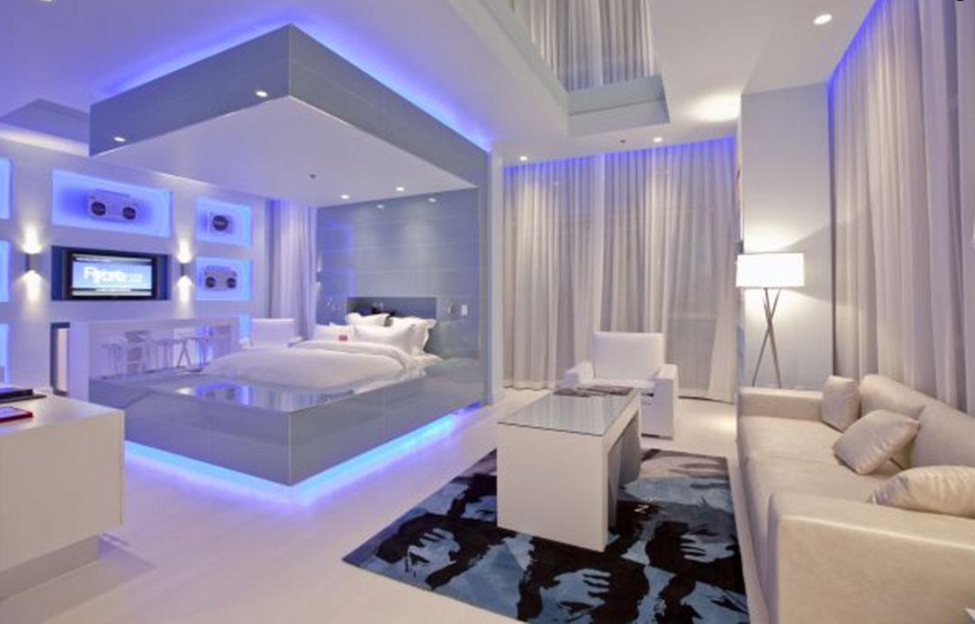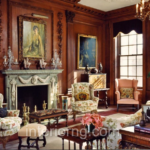Light as an Essential Element of Interior Design and Its Transformative Power- Light is a potent and frequently underrated element in interior design that has the amazing capacity to change environments, elicit feelings, and improve functionality.
It’s not only about lighting; it’s also about establishing a mood, emphasizing architectural details, and directing the eye.
In this thorough guide, we’ll delve into the varied functions of light in interior decoration and investigate how it can significantly affect how we perceive and use our living spaces.

The Foundations of Lighting
Light as an Essential Element of Interior Design and Its Transformative Power- Let’s first comprehend the fundamentals of light in interior design before delving into its transforming potential:
- Natural vs. Artificial Light: To accomplish their tasks, interior designers use both artificial (electric lighting) and natural (sunlight) light. Each type has particular qualities and uses.
- Warm (yellowish) to cool (bluish) colour temperatures are the range of light sources’ emissions. The atmosphere and mood of a space are influenced by the colour temperature selection.
- Lumens are used to measure a light’s brightness. To ensure that it satisfies the functional and aesthetic requirements of a room, designers consider the intensity of light.
- Direction: There are many different techniques to direct light, including wall washing, uplighting, and downlighting. The use of directional lighting highlights particular characteristics or places within a room.
- Setting the Mood with Light: Setting the atmosphere and mood is one of the most dramatic ways that light alters a space:
- Warmth and Coziness: Table lamps or candles cast soft, pleasant illumination that makes living areas feel warm and inviting.
- Elegance and Sophistication: Dining rooms and foyers are made more opulent with the addition of chandeliers and pendant lights with crystal accents or modern designs.
- Productivity and Focus: In-home offices or kitchens, cool, bright lighting improves focus and productivity.
- Relaxation and Serenity: In bathrooms and other spa-like settings, soft, diffused lighting encourages relaxation and peace.
Enhancing Space Using Light
The perception of a space’s size and aesthetic appeal are greatly improved by light:
- Natural Light and the Sense of Space: A room can appear larger and airier when there is a lot of natural light coming in through the windows.
- Reflection and mirrors: Well-placed mirrors reflect both ambient and artificial light, giving the room an impression of depth and spaciousness.
- Highlighting Architectural Features: Strategically placed lighting fixtures can highlight architectural features like exposed beams, soaring ceilings, or elaborate mouldings.
- Zoning and Layering: To establish zones inside a room and add depth to the overall design, designers employ a variety of lighting approaches, including task, ambient, and accent lighting.
Light as a Tool for Art
Lighting is a versatile instrument that gives designers a chance to express their creative flair:
- Statement Lighting Fixtures: Designer sconces, pendants, and chandeliers may be works of art in and of themselves, bringing a sense of opulence and character to a room.
- Art galleries and museums utilize specialized lighting to illuminate works of art, sculptures, and displays.
- Colour Play: Colored lighting or the application of colored gels can completely alter the appearance and atmosphere of a space, producing dramatic effects or establishing a particular theme.
Applications of Light in Real Life
Light is used in interior design for more than just aesthetic purposes.
- Task Lighting: Task-specific lighting, such as reading lights in bedrooms or under-cabinet lighting in kitchens, guarantees that tasks can be carried out securely and pleasantly.
- Security and Safety: Exterior lighting, such as motion-activated lights and landscape lighting, improves security and safety surrounding the home.
- Circadian Lighting: To encourage well-being and regular sleep cycles, designers are increasingly taking into account circadian lighting systems that imitate the natural progression of sunlight throughout the day.
Technologies for Lighting Innovations
The choices for interior designers have increased thanks to developments in lighting technology:
- LED Lighting: With its durability, adaptability, and variety of colours, energy-efficient LED lighting has revolutionized interior design.
- Smart Lighting: Home automation systems give owners remote control over lighting, allowing them to change the brightness and colour to fit their tastes and requirements.
- Human-Centric Lighting: This new fashion aims to create lighting systems that promote health and happiness for people, especially in settings like workplaces and healthcare facilities.
Tips for Lighting Design
Here are some lighting design suggestions to take into account, whether you’re a homeowner looking to improve your living environment or a designer looking to produce a masterpiece:
- Layer Your Lighting: To create a harmonious and useful lighting design, combine ambient, task, and accent lighting.
- Think about installing dimmer switches to alter the brightness and ambience of your lights.
- Pay attention to colour rendering: To achieve accurate colour depiction, select illumination sources with a high colour rendering index (CRI).
- Be Aware of Scale: When choosing fixtures, be aware of the size of the room and how the fixture will fit in.
Consider sustainability while choosing lighting options to lessen your influence on the environment and your energy bill.
FINAL THOUGHT
Light as an Essential Element of Interior Design and Its Transformative Power- Light is a dynamic and transformational factor that changes how we experience and interact with our living spaces.
It is not just a practical feature of interior design. Light can transform a location from ordinary to spectacular by raising mood, increasing the appearance of space, acting as an artistic instrument, and serving utilitarian purposes.
The importance of light in interior design will only increase as technology develops and designers explore new possibilities.
This will enable us to create rooms that are not just aesthetically attractive but also optimized for utility and well-being. So keep in mind the enormous impact that light may have on your design decisions whether you’re remodeling your house or starting a new project.





I never knew.